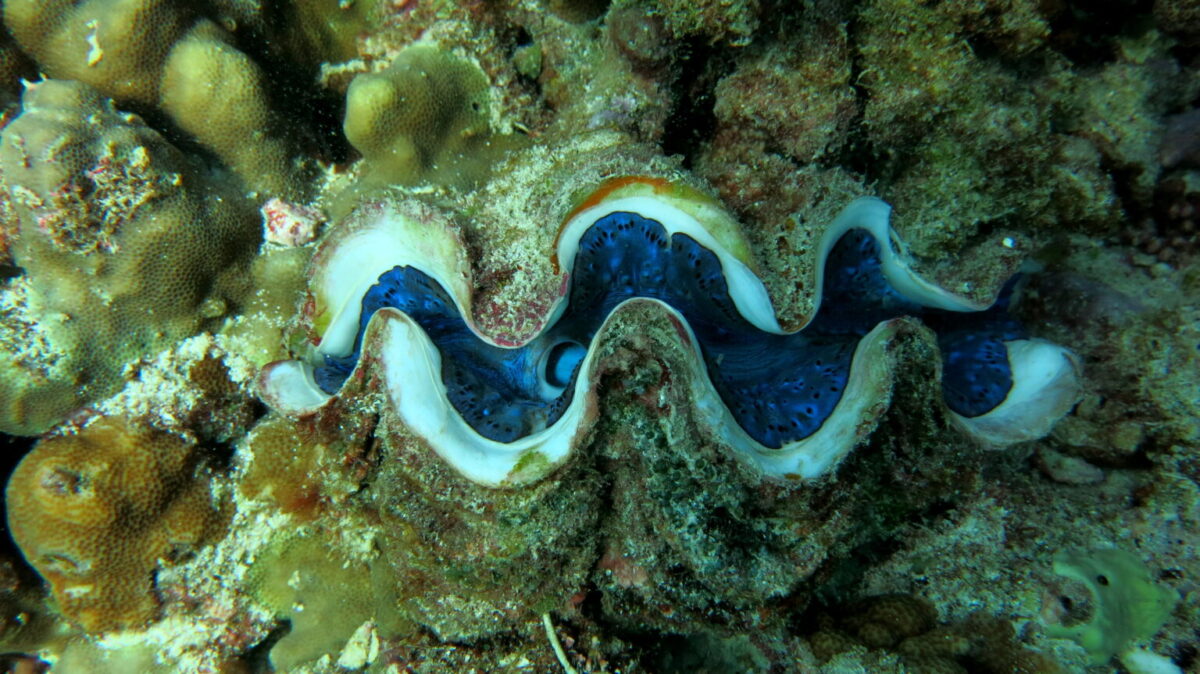Anyone interested in increasing the efficiency of their solar panels should consider taking inspiration from giant clams in the shallow waters of the Western Pacific Ocean, as a recent study led by Yale University scientists hypothesizes.
The scientists are currently working on obtaining funding for further proof-of-concept scale devices that operate according to the clam’s unique principles, lead author Alison Sweeney told pv magazine. The clams have distinctive bright blue ‘lips’ which are covered in shiny material that reflects light and directs it inwards towards photosynthetic algae in their dark innards to create energy. Their outer shell has algae that grow in vertical columns.
In the study “Simple Mechanism for Optimal Light-Use Efficiency of Photosynthesis Inspired by Giant Clams,” published in the journal PRX: Energy, the academics considered the fact that clams move and stretch in the sun throughout the day to maximize their efficiency. It presents an analytical model for determining the maximum efficiency of photosynthetic systems based on the physical structure, movement, and light-scattering characteristics of the creatures.
“We’d be very interested to hear from any possible industrial partners who might benefit from our insights about the clams,” said Sweeney. “The clams show us a straightforward strategy to perform photoconversion at the optimum light intensity for a given material while absorbing nearly all the environmental energy at a higher intensity. This would pertain to any organic photovoltaic material, or to any scheme to use biological photosynthesis for biofuel or biorefinery inputs. The giant clam design is important for any photoconversion technology that is prone to photodamage or exhibits decreased quantum efficiency with increasing solar flux.”
The scientists’ mathematical model calculates the clam’s quantum efficiency – their ability to convert photons into electrons. Accounting for changes in sunlight and the environment, they found the average quantum efficiency of these clams was 42%. And when the clams’ movements were added, this increased to 67%. By comparison, a green leaf system’s quantum efficiency in a tropical environment is only around 14%.
The clam’s solar potential is already known, but according to the researchers, the new calculations deliver an intriguing avenue for cell manufacturers to explore. For example, the industry could consider stretchy material for panels or growing algae on panels, as well as other possibilities. This study is part of a series by Sweeney’s lab that looks at how the natural world can influence sustainability practices in industry.
This content is protected by copyright and may not be reused. If you want to cooperate with us and would like to reuse some of our content, please contact: editors@pv-magazine.com.









By submitting this form you agree to pv magazine using your data for the purposes of publishing your comment.
Your personal data will only be disclosed or otherwise transmitted to third parties for the purposes of spam filtering or if this is necessary for technical maintenance of the website. Any other transfer to third parties will not take place unless this is justified on the basis of applicable data protection regulations or if pv magazine is legally obliged to do so.
You may revoke this consent at any time with effect for the future, in which case your personal data will be deleted immediately. Otherwise, your data will be deleted if pv magazine has processed your request or the purpose of data storage is fulfilled.
Further information on data privacy can be found in our Data Protection Policy.